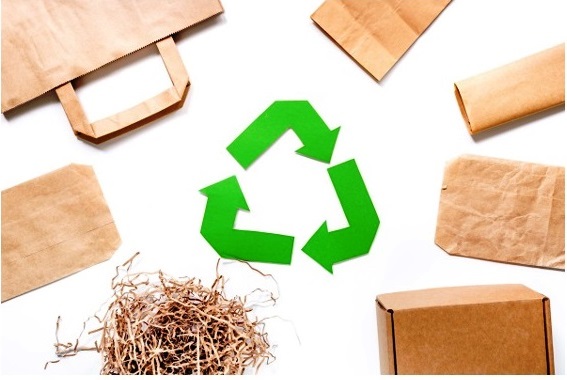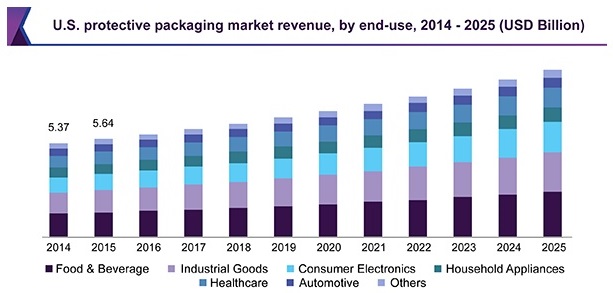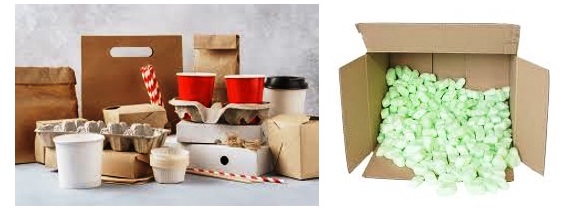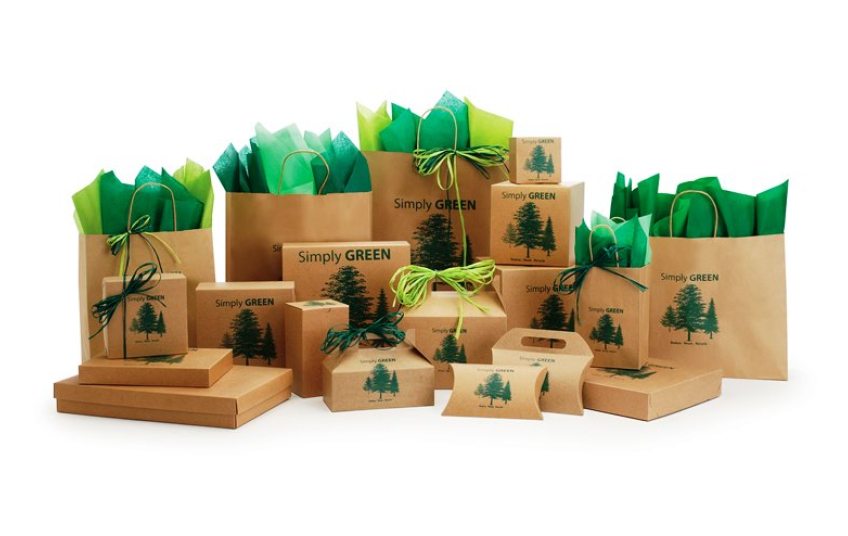Green or eco-friendly packaging is a deepening concern for many people and companies worldwide. From the many people who want to see more initiatives and the possibility of a world being helped to the corporations that may only want to go green to look good, green packaging has become quite the topic. This article will review the materials, reasons, pros and cons, and hopefully will be able to enlighten or assist whoever is reading.

To start, what is green packaging? Simply put, green packaging uses materials and manufacturing techniques to diminish energy use and reduce the harmful impacts of packaging on the environment. This is where the 4 Rs come into place. A good idea of how to move forward can come to mind with reduce, reuse, and recycle. Now, as for the fourth R, it has been tossed around for many ideas such as rethink or repurpose. For this to work in packaging, a company must either reduce the materials needed by cutting corners or create better designs. Companies can reuse old materials, but this can come with problems even when being careful. Recycling is a broad spectrum that can come from lots of materials, where the main problem is how to get the material back after its initial use. Beyond these, bioengineered biodegradable plastics are also used in some packing outlets.
The market is the end-all and be-all for companies. If they cannot compete and gain attention, they will fall in popularity for some other company to grab. Consumers are only growing in appetite with constant growth in spending, causing the packaging world to succeed in production. By 2025, there will likely be over a 50% increase since 2014 in revenue gained by the packaging industry in America alone. Currently, about 5.7% of the market has green products that are being used for sustainability. Granted, that isn’t a huge percentage, but it is a massive number of products. Even if there weren’t so many, the market for green products is still growing.


Materials for making packaging are ever-changing, and many are being created to fit new situations. Many depend on situations due to how they must be made, the resources needed to make them, or imperfections that weaken or destroy them.
- Starch-based biomaterial has many of the same characteristics as plastic but can be made from plants such as corn or potatoes. Its main uses now are bottles and loose-fill packaging material. However, parks such as Yellowstone have been using them as amenity holders.
- PLA, otherwise known as polylactic acid, can be used instead of standard petroleum plastic and typically comes from agricultural waste. Coca-Cola had a “plant bottle” made from sugar cane in other plant-based containers.
- Biodegradable packing peanuts have become a staple in cities where foam-based products have been set in place. They are lightweight, cheap, and can be made from starch, such as wheat. The major problem with biodegradable materials is that there are many cases when they can be broken down. For instance, they will most likely begin the deterioration process when they get wet or moist. This is good for the environment due to waste taking care of itself, but the package could be in trouble if it breaks down while in transit.
- Corrugated bubble wrap is the new alternative to the plastic counterpart. Bubble wrap is a consumer favorite for being able to pop it, but at the end of the day, the plastic still goes to the landfills. In the case of corrugated bubble wrap, it is made from cardboard and is much easier to recycle and reuse.
There are many newer green materials, and the list is expanding to meet all the necessities for packaging. The difficulty is that often recycled material is worse than its original material. Take wood, for instance; while it is possible to turn wood into pulp and chemically make it into a new wooden product, the fibers in the wood would become shorter with every recycling process. Looking at biodegradable materials, an easier flaw is spotted. Since it is biodegradable, it can break down during transport or storage depending on the conditions and weather. Plastic is an excellent material with a very high ability to be recycled, but the problem is that plastic has a very low percentage of recycled. There are cases where this is because there is no recycling station near enough to the consumer, but in many cases, it is far more likely that the consumer did not care. This makes procuring plastic to recycle a much more arduous task. Cardboard is an excellent material in that it can be strong under the right conditions and has a relatively high percentage of being recycled. Cardboard does get weaker after being recycled like wood but can be used in other ways that do not require strength, such as corrugated bubble wrap.

Companies must also distinguish if going greener is better or worse for them. Going in a greener direction will cost more and take longer. For instance, the Shawmut communication group has the following studies.
It also believes that 83% of millennials, 66% of Gen X, and 62% of baby boomers believe in supporting green businesses. I believe the data above is skewed. While yes, a vast number of people say supporting green companies is essential, a much smaller proportion goes to specifically green businesses. In many cases, being green is just a side benefit. Every company should decide where they will be stationed based on their beliefs. While being green is good, there will be other factors for bringing in business today. It may become a more reasoned issue in the near future.
References
https://bulkbagreclamation.com/what-is-green-packaging/
https://www.grandviewresearch.com/industry-analysis/green-packaging-market
https://www.mordorintelligence.com/industry-reports/green-packaging-market
https://news.climate.columbia.edu/2020/03/13/fix-recycling-america/#:~:text=What%20actually%20gets%20recycled%3F,tons%20were%20recycled%20or%20composted.&text=Sixty%2Dsix%20percent%20of%20discarded,percent%20of%20plastics%20were%20recycled.
https://blog.shawmutdelivers.com/the-year-of-sustainability-why-more-companies-are-going-green-in-2020#:~:text=Research%20shows%20the%20number%20of,Buoy%20Consulting%20Eliza%20Erskine%20says.
https://www.massaudubon.org/news-events/publications/explore/past-issues/spring-2019/the-four-rs


































